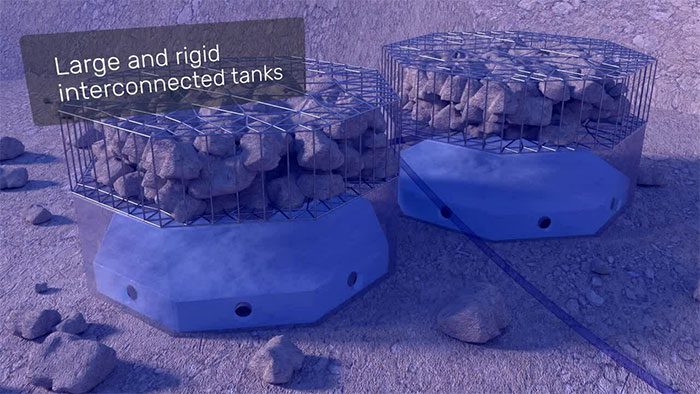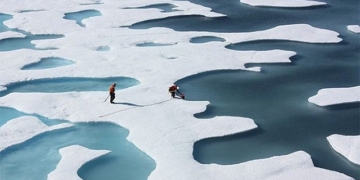The BaroMar company’s system utilizes surplus electricity to compress and transport air down to underwater containers, storing it until needed.
Simulation of the underwater compressed air energy storage system. (Video: BaroMar).
Israeli company BaroMar is preparing to test an energy storage system touted as the most cost-effective solution for long-term stabilization of renewable energy grids, New Atlas reported on May 6. Specifically, BaroMar will utilize Compressed Air Energy Storage (CAES) technology to store surplus renewable electricity for later use during the cold winter months.
CAES uses surplus electricity to operate compressors, pumping air into large containers. The air is stored at high pressure and is subsequently released through a turbine to run a generator. This technology is already cost-effective, but BaroMar claims that its new system could even outperform traditional long-term electricity storage systems.
Essentially, BaroMar’s facilities will be located near the coast, with access to deep water. Instead of using high-pressure containers, BaroMar leverages the water column pressure to store compressed air in much cheaper containers.
These containers are made of concrete and steel, topped with a cage filled with rocks to keep them submerged at depths ranging from 200 to 700 meters. They have multiple water valves around them and are initially filled with seawater. The compressor and generator systems are situated close together on dry land. When surplus electricity is available for storage, the compressor draws surrounding air down into the containers through pipes at pressures of 20 to 70 bar, depending on the depth.

These containers are made of concrete and steel, topped with a cage filled with rocks.
The compressed air will displace the water from the containers, but since the hydrostatic pressure of the surrounding water balances the internal air pressure, the containers do not need to be as robust and expensive as those on land. On land, the air inside the containers is at much higher pressure compared to the normal atmospheric pressure outside.
When energy needs to be released, the system allows the air to flow back through the pipes into a heat recovery system, followed by an expansion turbine that drives the generator. On the other end, water flows back into the containers and is ready to be displaced when the compressor operates.
A pilot project is being developed in Cyprus, aiming for a cycle efficiency of about 70%—equivalent to the efficiency of the world’s largest CAES plant with a capacity of 100 MW, capable of storing 400 MWh of electricity in Zhangjiakou, northern China. This is a very high efficiency compared to traditional compressed air systems. Of course, the pilot plant will be much smaller, storing only 4 MWh of electricity.
BaroMar claims that their system is less costly than other Long-Duration Energy Storage (LDES) solutions due to the inexpensive containers, high durability, and low to zero underwater maintenance costs. When operating a 100 MW plant with a storage capacity of 1 GWh for 350 days a year over 20 years, the company could provide a Levelized Cost of Storage (LCoS) of $100 per MWh, while other LDES technologies are priced around $131/MWh.




















































